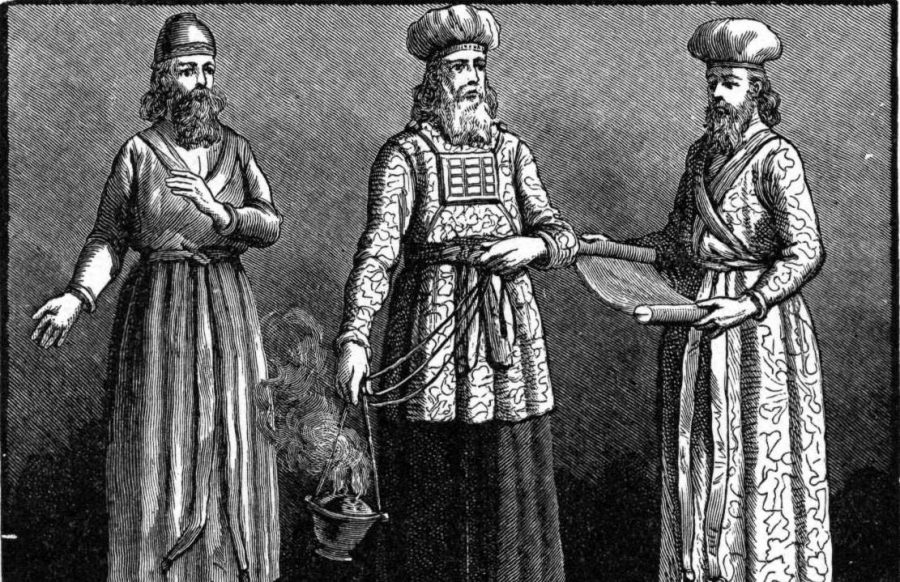What the 12 gems on Aaron’s breastplate really meant to remind him
Published March 2, 2023
If you are a person who values attention to detail in the clothes that you wear, then Parshat Tetzaveh is the portion for you.
In this week’s portion, we find an elaborate description of what Aaron, Moses’ brother, is commanded to wear when he is serving as High Priest officiating at sacrificial services in the Tabernacle. Exodus 28:15, describes one piece of Aaron’s ritual garb: an ornamented breastplate containing 12 precious gems that was to be worn over the heart, one gem for each of the tribes that form the Israelite community.
In Exodus 28:19 we read: “Aaron shall carry the names of the children of Israel on the breastplate of decision over his heart, when he enters the sanctuary, for remembrance before the Eternal God at all times.”
Avnei zikaron, stones of remembrance, also are mentioned in Exodus 28:12. And this Shabbat, on which we read Parashat Tetzaveh, is called Shabbat Zachor, the Sabbath of Remembrance (though this name is referencing a special Torah portion from the book of Deuteronomy).
With all of these mentions of remembrance, one good question might be: What is it that Aaron was to remember through these special garments? Numerous biblical commentators stress that the purpose of much of Aaron’s ritual garb was to remind the High Priest of those for whom he was spiritually responsible. The idea was that when Aaron looked at the 12 stones and at the names of the tribes engraved on some of his other accessories, he would remember his obligations, not only to God, but also to the people.
Rabbi Dorothy Richman has noted that the author Eduardo Galeano defines the word remembrance through his native Spanish: “Recordar, to remember, from the Latin re-cordis, to pass back through the heart.”
As the High Priest, it would have been easy for Aaron to become caught up in his ritual duties and his connection to the Holy Blessed One. Perhaps having the 12 tribes integrated into his clothing served as a reminder that service to God is often best expressed in the way we serve and care for God’s people. Feeling the 12 stones on his breastplate or seeing the engraved names of the tribes on other parts of his attire probably helped Aaron recall that his service to God was not for himself alone.
Set apart from the people in so many physical ways through tribe, dress and ritual requirements, Aaron needed to be reminded that his well-being was intricately bound to the well-being of the people. Perhaps before performing his ritual functions, Aaron was able to pause for a moment and “pass back through his heart” the needs and longings of the people. This moment of spiritual realignment may have helped Aaron carry out his ritual duties with greater intention and care because he had the people’s well-being in mind.
There is another possible reason that the 12 tribes were incorporated into the design of the High Priest’s garments. While this clothing was worn exclusively by Aaron, it was seen by all the people each time they gathered for a sacrificial ceremony. Seeing their tribes represented on Aaron’s breastplate and other accessories helped the people believe that they were being seen, remembered and ultimately cared for by God.
In fact, Rashi believes that the reason the 12 tribes were represented on the High Priest’s vestments is so that God “would see the tribes written before God, causing God to remember their righteousness” (commentary on Ex. 28:12). For Rashi, it is not only humans who need to be reminded of the importance of a connection with the people. God needs that reminder as well.
Taken together, these understandings of what a “remembrance before God” means hearkens back to the introduction of all the priestly clothing mentioned in this Torah portion. Near the beginning of Tetzaveh, God tells Moses: “Make sacred vestments for your brother Aaron, for kavod ul’tifaret, for dignity and beauty” (Ex. 28:2).
Through these vestments, the community was to be reminded of the inherent dignity and beauty of every member of every tribe. So perhaps the ultimate meaning of being a “remembrance before God” — no matter what we wear — is to live our lives in ways that embody this awareness that each of us is created, b’tzelem Elohim, in the image of God, deserving of dignity and allowed to let our inherent beauty shine.
Rabbi Andrea Goldstein serves Congregation Shaare Emeth and is a member of the St. Louis Rabbinical and Cantorial Association, which coordinates the d’var Torah for the Jewish Light.
















